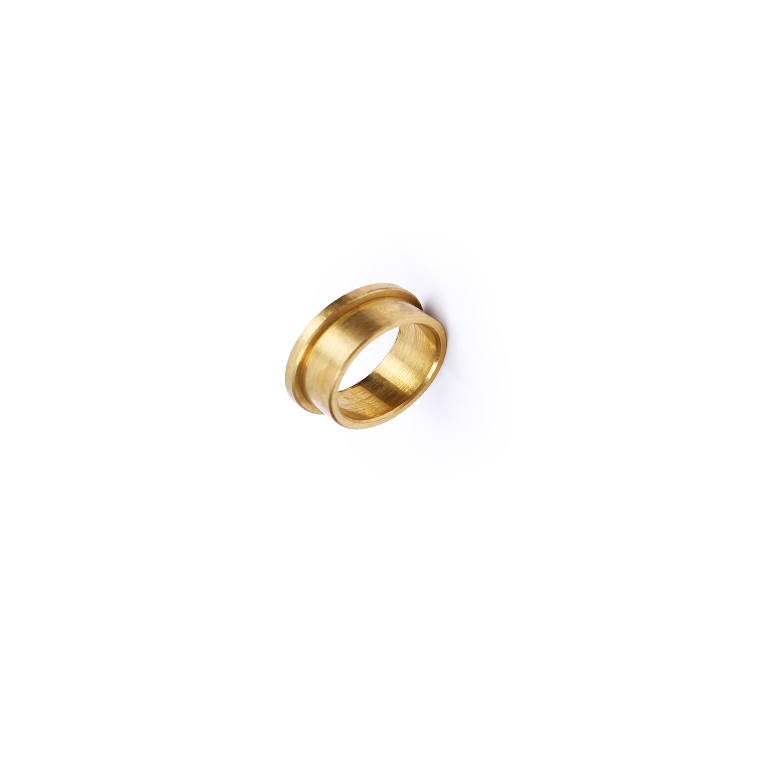
Surface roughness is generally formed by the processing method used and other factors, such as the friction between the tool and the part surface during CNC machining, the plastic deformation of the surface layer metal when the chip is separated, and the high frequency vibration in the process system. Due to the different CNC processing methods and workpiece materials, the depth, density, shape and texture of the traces left on the processed surface are different.
Generally, the smoothness of ordinary machine tools is about 3.2, and the finish of high-speed machines can reach 1.6; pay attention to the cutting tools and cutting parameters used in processing. details as follows:
1.1. CNC turning roughness:
CNC turning is a computerized CNC machining process in which the workpiece rotates and the turning tool moves in a straight line or a curve in a plane to process internal and external cylindrical surfaces, end surfaces, conical surfaces, forming surfaces and threads
(1) Generally, the surface roughness of CNC turning is 1.6-0.8μM.
(2) Rough turning: Use large cutting depth and high feed to improve efficiency without reducing cutting speed, and the surface roughness requirement is 20-10μm.
(3) Semi-finishing and finishing turning: use small cutting speed and high-speed feed, and the surface roughness requirement is 10-0.16μM.
(4) For high-precision CNC lathes: fine-ground diamond turning tools can turn non-ferrous metal workpieces at high speed and precision, with a surface roughness of 0.04-0.01μm, also known as "mirror turning".
2. CNC boring roughness:
Boring is an internal cutting technique that uses a boring tool to enlarge a hole or other existing circular profile. The tool used is usually a single-edged boring tool (boring bar). Suitable for semi-roughing to finishing.
(1) The boring accuracy of steel can reach 2.5-0.16μM.
(2) Fine boring accuracy can reach 0.63-0.08μM.
3. CNC milling roughness:
CNC milling refers to the machining of stationary workpieces with rotating multi-point cutters on a computer-controlled machine tool, suitable for machining slots, flat surfaces, gears, and special features.
(1)The surface roughness of grinding is generally 1.25-0.16μM.
(2)The surface roughness of precision grinding is 0.16-0.04μM.
(3) The surface roughness of ultra-precision grinding is 0.04-0.01μM.
(4) The surface roughness of mirror grinding is less than 0.01μM.
The surface roughness of CNC machining is closely related to the matching properties, wear resistance, fatigue strength, contact stiffness, vibration and noise of mechanical parts, and has an important impact on the service life and reliability of mechanical products. Generally, Ra is used for labeling.
The sampling length should be based on the actual surface formation and texture characteristics of the part, and the length that can reflect the surface roughness characteristics should be selected. The sampling length should be measured according to the general direction of the actual surface profile. The purpose of specifying and selecting the sampling length is to limit and weaken the influence of surface waviness and shape errors on the measurement results of surface roughness.
Surface roughness has a great influence on part serviceability. Generally speaking, if the surface roughness value is small, it will improve the fit quality, reduce wear and prolong the service life of parts, but the processing cost of parts will increase. Therefore, it is necessary to choose the surface roughness value correctly and reasonably. When designing a part, the choice of the surface roughness value is determined according to the function of the part in the machine.
Although CNC machining can produce parts with tight tolerances and fine parts from various metal or plastic materials, due to the subtractive nature of the machining process, the surface of the parts will have small tool marks after machining. However, we can use a variety of methods to improve the surface roughness, visual performance and wear resistance of CNC machined parts.

Copyright © 2025 Dongguan Yifeng Metal Co., Ltd. | All Rights Reserved